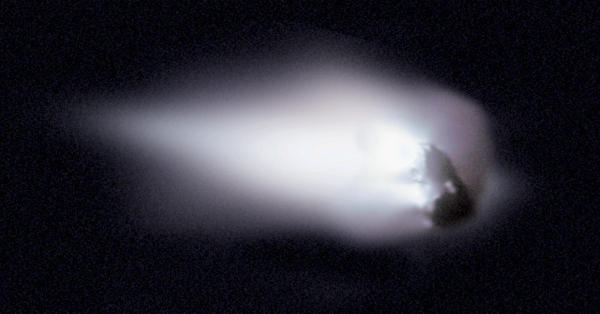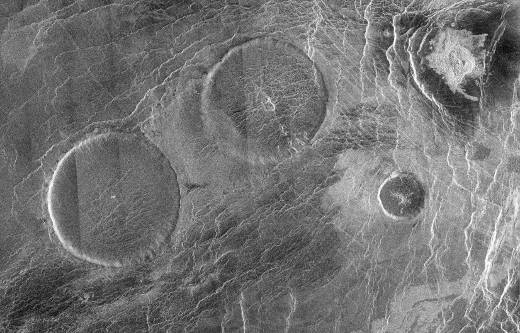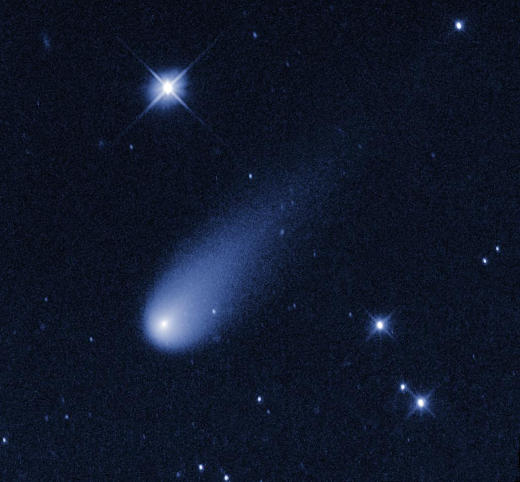NASA’s screen-cast of the recent drop in solar (sunspot and flare) activity and the now expected cyclical shift back up, as solar activity starts to pick up again. As per the NASA-NOAA prediction panel which is comprised of leading solar physicists, this could lead to an upcoming mini solar maximum cycle in 2014.
All posts by space
Halley’s Comet

Every 76 years, the famous Halley’s Comet makes its way through the inner solar-system and is visible from Earth. This periodicity was first determined in 1705 by English astronomer Sir Edmond Halley, after whom the comet is named. This picture of Comet Halley (1P/Halley) was taken in 1986 which was its most recent foray into this part of our solar system. The European Space Agency space craft Giotto snapped this picture and became one of the first spacecraft ever to encounter and photograph the nucleus of a comet. Giotto was able to pass and image Halley’s nucleus as it receded from the Sun.
Supernova remnants from Large Magellanic Cloud

A millennium ago, about 160,000 light years away from the Milky Way galaxy, a supernova exploded in the Large Magellanic Cloud (a satellite galaxy to the Milky Way). The Spitzer space telescope’s advanced instruments picked up the infrared light emitted by dust from the remnants (red), the ambient background areas (green, yellow) and the remaining stars (blue). The closely grouped set of blue stars in the lower right of the image is the cluster known as NGC 1850. Spitzer’s Infrared Array Camera (IRAC) was used to compile the data for this picture.
Eistla region on Venus

The Magellan spacecraft took this picture of planet Venus (also known as the Morning star and Evening star) in early 1996. It focuses on the Eistla region on Venus located at 12.3 north latitude, 8.3 degrees east longitude and represents an area 160 km by 250 km on Venus. This picture shows the distinctive “pancake domes” – referred to as such due to their flat tops. These volcanic domes can be up to 65 km across but only go about 1 km in height and were formed by volcanic extrusions of sticky/viscous lava on planet Venus.
Comet ISON

Since its discovery in 2012, Comet ISON (C/2012 S1) generated a lot of interest and intrigue before meeting its end at the hands of the Sun. It was named “ISON” after the organization where its discovery was made, using the initials of the Russian International Scientific Optical Network. The Hubble Space Telescope took this picture of Comet ISON in July 2013 as it was rocketing toward the Sun at a whopping speed of 48,000 mph. The comet itself was believed to be very cold thanks to an icy nucleus and a tail streaming copious amounts of gas and dust. It disintegrated into the Sun on December 1-2, 2013.